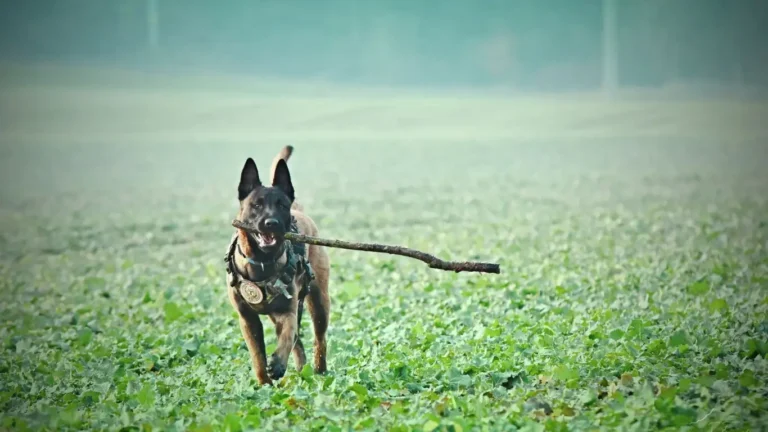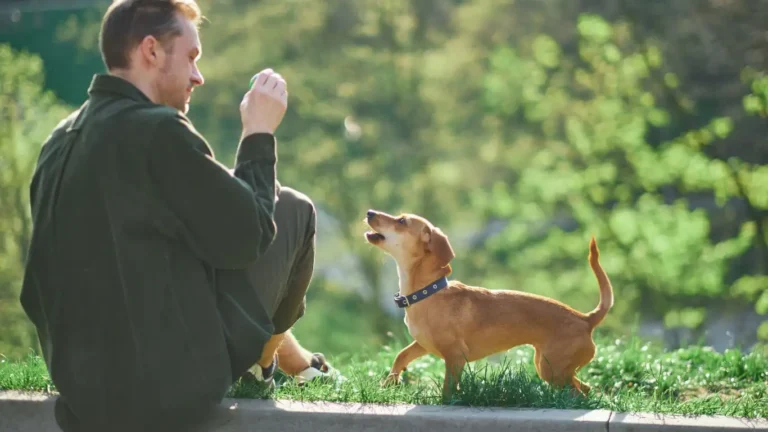How to Train a Dog to Enjoy Longer Hikes: Boost Their Trail Confidence
As an Internal Medicine Physician, I’ve always been passionate about health, not just for humans, but for our furry companions as well. One area that’s often overlooked is ensuring that your dog is fit and comfortable enough to join you on longer hikes. If you’re a dog lover and someone who enjoys outdoor adventures, you’ve probably considered how to train your dog to enjoy longer hikes. It’s not just about having them walk alongside you; it’s about boosting their trail confidence and ensuring they’re physically and mentally prepared for the challenge. With the right preparation, training, and patience, you and your dog can explore the trails together, making memories along the way.
Building Your Dog’s Endurance for Longer Hikes

The first thing to keep in mind when training your dog for long hikes is that it’s a process that takes time. Much like us, dogs need to build up their stamina gradually. Jumping straight into long, challenging hikes without the proper preparation can lead to exhaustion, discomfort, or even injury. So, before you even think about tackling a multi-mile trail, you need to start with shorter walks and progressively increase the distance over time.
As a veterinarian, I often see owners excited to get their dogs involved in outdoor activities, but they forget to give them the proper foundation. When you’re first starting out, think of it like an athlete training for a marathon. You wouldn’t just run a marathon the first day you hit the pavement, right? Start with shorter treks that last anywhere from 20 minutes to 1 hour, depending on your dog’s breed, age, and health status. Over time, you can slowly add more time and distance to their walks.
Keep Your Dog’s Breed and Age in Mind
Not all dogs are built the same, and understanding your dog’s breed and age is essential when setting training goals. Some breeds, like Border Collies or Labrador Retrievers, are naturally athletic and may take to hiking with ease. Others, especially smaller breeds or senior dogs, may need extra time to adjust. Keep an eye on how your dog reacts during these walks—are they lagging behind? Are they showing signs of fatigue or discomfort? If so, it might be time to scale back a bit and reassess their stamina.
If you have an older dog or one that hasn’t been as active, start slow and focus on building their strength. Shorter walks that include plenty of breaks are the way to go. This allows their muscles and joints to gradually strengthen without overexertion. On the other hand, young dogs or high-energy breeds may require more intense training, but it’s still important to build their endurance slowly.
Teaching Your Dog to Enjoy the Journey
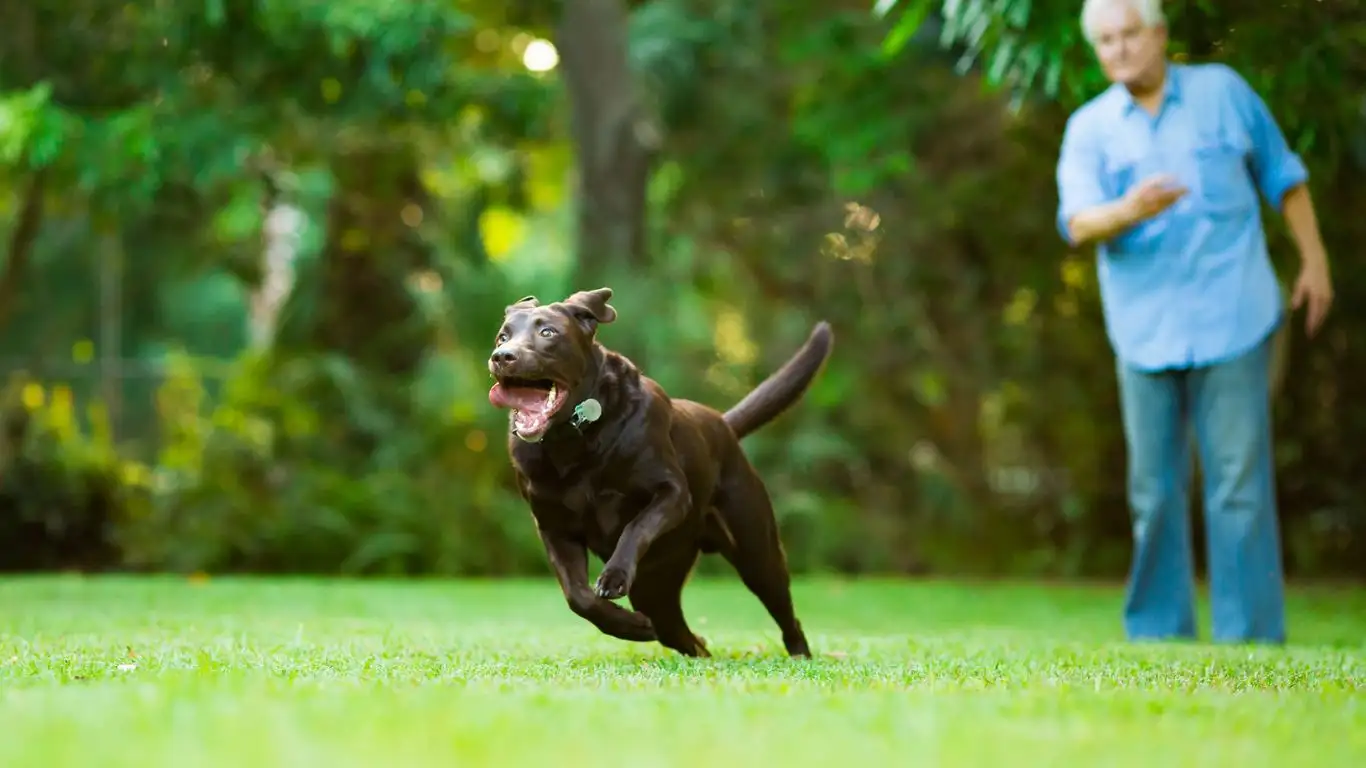
Training a dog to hike isn’t just about endurance; it’s also about teaching them to enjoy the experience. For many dogs, long hikes can be a bit overwhelming at first, especially if they’re not used to being out in nature for extended periods. That’s why it’s important to make the experience enjoyable from the very beginning.
One of the best ways to do this is by associating the hike with positive experiences. Bring along their favorite toys, offer plenty of treats during breaks, and take time to let them explore. Dogs love mental stimulation, and hiking offers a wealth of new smells, sights, and sounds. Allowing them to take their time sniffing and exploring the trail is not only fun for them, but it also gives them a sense of freedom and control over the environment.
One tip I’ve found helpful is to take your dog on shorter, positive adventures before embarking on longer hikes. For instance, visit local parks or trails where the terrain is easier and less demanding. As they start to enjoy these outings, you can gradually introduce more challenging routes. Over time, they’ll begin to associate hiking with positive feelings and excitement, which will make the longer hikes much more enjoyable for both of you.
Use Positive Reinforcement
When training your dog for hikes, remember to use positive reinforcement. It’s essential to reward your dog for good behavior, whether it’s for walking steadily by your side, following commands, or even just showing enthusiasm for the journey. Positive reinforcement builds confidence and encourages your dog to engage with the activity more eagerly. Rewards like treats, praise, and playtime can go a long way in making the experience fun and memorable.
- Reward your dog for walking at a consistent pace.
- Offer treats during breaks to keep them motivated.
- Provide lots of praise when they show interest in new surroundings.
Essential Gear to Keep Your Dog Comfortable
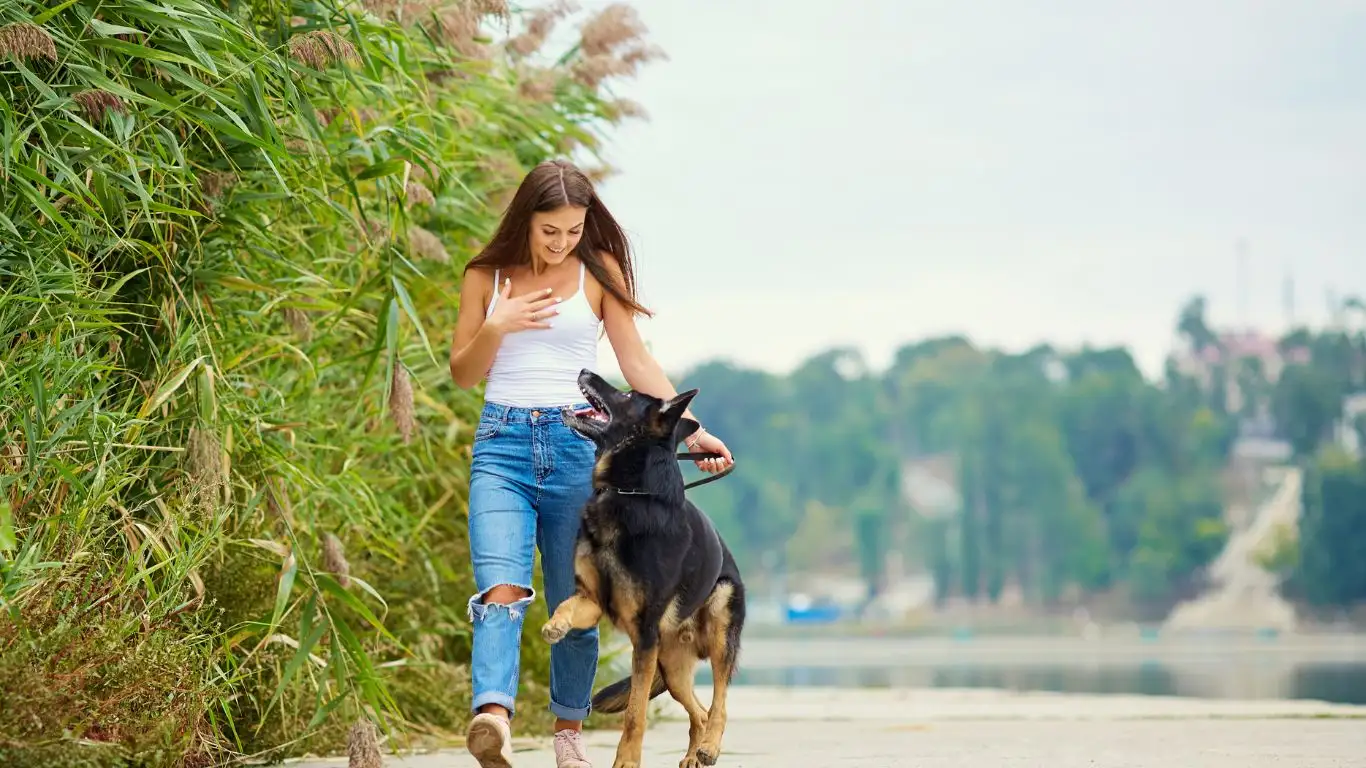
To ensure your dog enjoys longer hikes, it’s important to equip them with the right gear. Not only does this help them stay comfortable, but it also keeps them safe during your outdoor adventures. Here are a few essentials you should consider:
- Harness: A well-fitted harness is essential for hikes. It provides better control and distributes pressure more evenly than a collar, which can cause discomfort or injury over time.
- Water and Bowl: Just like us, dogs need hydration, especially during long hikes. Always carry water and a collapsible bowl so your dog can take regular water breaks.
- Booties: If you’re hiking on rough terrain or in areas with extreme weather, consider dog booties to protect their paws from sharp rocks, hot surfaces, or ice.
- First Aid Kit: Accidents can happen, so it’s always a good idea to carry a basic first aid kit for your dog. Look for one that includes items like antiseptic wipes, bandages, and tweezers for tick removal.
Gradual Exposure to Challenging Terrain
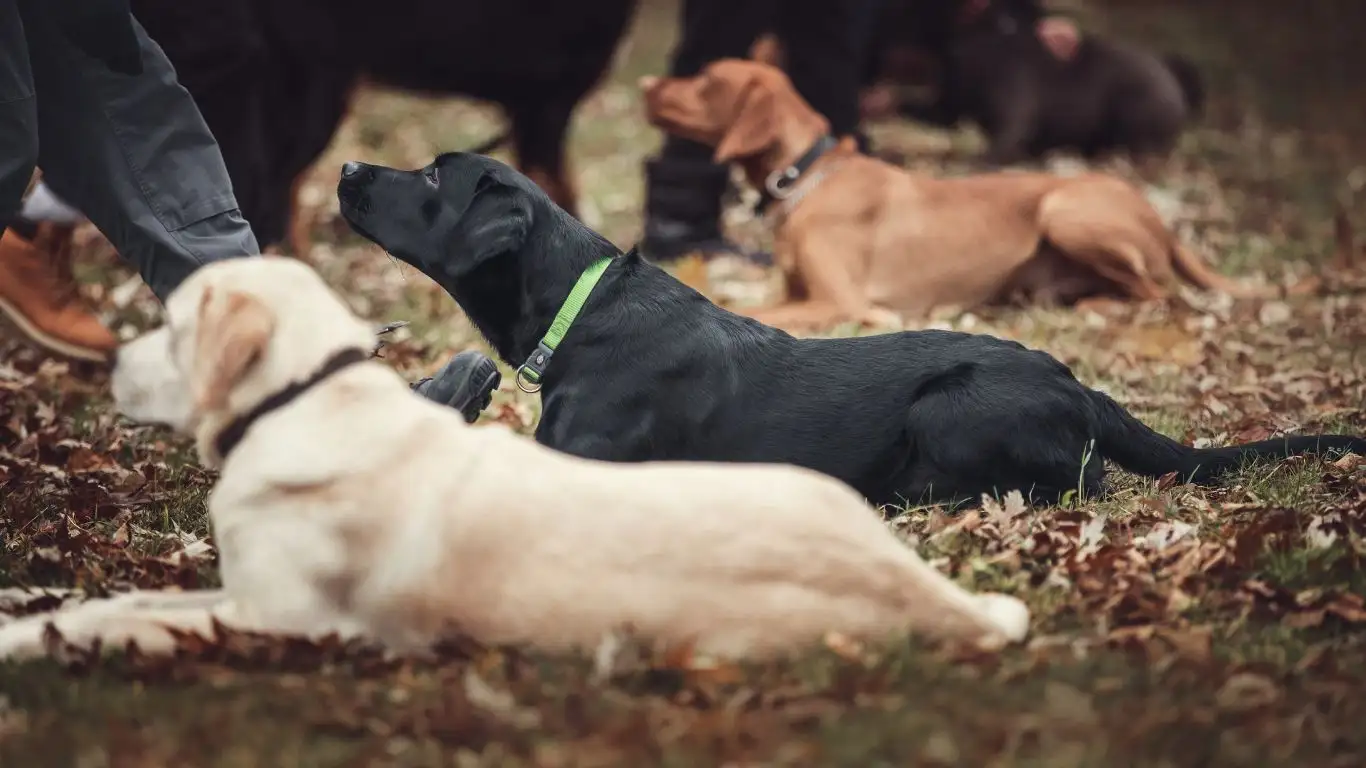
As you continue to train your dog for longer hikes, it’s essential to expose them to different terrains. The more varied the landscape, the more confidence they’ll gain as they adapt to different conditions. For example, if you plan on hiking through rocky paths or muddy trails, it’s a good idea to start with simpler terrain that mimics what they’ll encounter on the hike. This can include grass fields, light trails, or sandy paths. The goal is to get your dog used to walking on uneven surfaces before hitting the more difficult sections of the trail.
Start with slight inclines and move on to steeper terrain as your dog gets more comfortable. I’ve found that gradually increasing the challenge, while keeping their safety in mind, builds their confidence in handling rocky or unstable paths. Dogs can be surprisingly good at navigating tricky terrain, but it’s important not to rush them. Give them time to learn how to find their footing, especially on slopes or trails with loose gravel. Over time, your dog will become more comfortable with these variations, and the thought of tackling tougher terrain won’t seem as daunting to them.
Focus on Trail Etiquette and Safety
When it comes to hiking with dogs, trail etiquette is just as important as the physical training. You want your dog to be well-behaved on the trail, whether they’re interacting with other hikers, cyclists, or other dogs. Start by teaching your dog basic commands like “leave it,” “sit,” and “stay.” These commands can be a lifesaver when you encounter other trail users or need to keep your dog safe around wildlife.
One of the challenges I’ve noticed is dogs getting overly excited when they spot other animals or other hikers. Training your dog to stay calm and focused is crucial. I’ve used positive reinforcement to teach my dogs to remain calm when we encounter other dogs, hikers, or even wildlife. If your dog gets distracted easily, it’s helpful to take short breaks to refocus them before continuing the hike.
Also, remember to keep your dog on a leash in areas where it’s required or necessary for safety. Even if your dog is generally well-behaved, you never know when an unpredictable situation might arise. By having your dog on a leash, you’re ensuring their safety and the safety of others on the trail.
Training Your Dog to Be Comfortable with Backpacking Gear

Once your dog has built up their endurance and confidence on shorter hikes, it’s time to think about the gear you’ll need to make those long-distance hikes more comfortable. Some dogs may eventually need to carry a portion of the load, especially on extended hikes where food, water, and other supplies are required. This is where a dog backpack comes into play.
Introducing a backpack to your dog is another great way to build their confidence. Start by allowing your dog to get familiar with the pack before putting any weight in it. Let them wear it around the house or during shorter walks to get used to the sensation of something on their back. For most dogs, this step is relatively easy, but if your dog is sensitive to wearing a backpack, it may take a little longer to get them comfortable. Be patient, and offer plenty of praise for their efforts.
Once your dog is comfortable wearing the backpack, you can begin adding light loads such as their water bowl, a small first aid kit, or treats. Gradually increase the weight over time as your dog becomes accustomed to carrying their supplies. Keep in mind that the goal is not to overload your dog but to make their hiking experience more manageable and enjoyable. A properly fitted backpack should never be too heavy for your dog, as this could lead to strain or injury.
Know When to Take Breaks
No matter how well you’ve trained your dog for longer hikes, it’s essential to recognize when they need a break. While dogs can be incredibly resilient, they don’t always know their own limits, which is why it’s up to us to monitor their energy levels. I always keep an eye out for signs of fatigue, such as heavy panting, lagging behind, or showing reluctance to continue. These are signs that it’s time to take a break.
When you stop, ensure your dog has access to water and a chance to cool down. If you’re hiking on particularly hot days, keep their paws off hot surfaces like asphalt and try to rest in shaded areas to help keep them cool. It’s also important to offer them a moment to sniff around or relax—sometimes, dogs just need a little time to recharge mentally as well as physically. Never rush through breaks, as they are just as important as the hike itself for maintaining your dog’s stamina and happiness.
- Watch for signs of fatigue, like lagging behind or excessive panting.
- Offer plenty of water and snacks during breaks to keep them energized.
- Let your dog explore and sniff during breaks to keep their mind engaged.
Proper Nutrition and Hydration During Hikes

Just as you need to fuel up before a hike, your dog also needs the proper nutrition to keep their energy up. I’ve always made sure to pack high-quality treats that are easy to carry but provide the right amount of energy. Look for snacks that are specifically designed for active dogs—these are usually packed with protein and nutrients that can help replenish their energy levels during breaks.
Hydration is just as important. Always carry enough water for both yourself and your dog. There are plenty of collapsible water bowls available that are easy to carry and great for hiking trips. Some dogs might be hesitant to drink water during a hike, so I often use the opportunity to stop, offer water, and make it part of the routine. This helps prevent dehydration, which can lead to fatigue and other health issues.
When you’re planning longer hikes, consider feeding your dog a larger meal the night before, but keep their morning meal light. You don’t want them hiking on a full stomach, but a light snack before you head out can give them the energy they need to start strong.
Building Confidence with Longer and More Challenging Hikes

Now that your dog is feeling more confident and comfortable on shorter hikes, it’s time to gradually build up to longer, more challenging hikes. The key here is to gradually increase the distance and elevation to avoid overwhelming your dog. I always like to remember that the goal is to challenge them, not stress them out.
One strategy that worked really well for me when building my dog’s trail confidence was to introduce longer hikes in stages. Instead of jumping from a 2-mile trail to a 10-mile one, I would aim for something in between, like a 4 or 5-mile hike. This allows the dog to adapt to longer durations while still feeling comfortable and not too fatigued. The gradual progression helps your dog build stamina without overwhelming them.
As your dog gets used to longer distances, start introducing more difficult challenges such as steeper inclines or more rugged terrain. Always be mindful of their pace and energy levels. It’s okay to take breaks more frequently if needed. The key to building their confidence is positive reinforcement, so keep encouraging them, even when they struggle. A little praise goes a long way in boosting their morale!
Watch Out for Potential Hazards on the Trail
When you’re hiking with your dog, it’s crucial to be aware of potential hazards that could be harmful to both of you. Trails may have rocks that can be slippery, sharp plants, or even wildlife that could be dangerous. Over the years of hiking with my dogs, I’ve become more attuned to spotting these hazards before they become a problem. You should always stay alert and keep your dog close to you, especially if they have a tendency to wander off the trail.
One thing I do regularly is inspect the trail ahead of me and clear any debris, especially sharp rocks or thick brush that might be hard for my dog to navigate. If your dog is younger or more active, they may be tempted to charge ahead, but it’s better to keep a steady pace and not rush, as this can prevent injury to their paws or limbs.
Additionally, keep an eye out for plants like poison ivy or thorny bushes that could irritate your dog’s skin. I make sure to keep my dog’s paws clean after each hike, especially when hiking through areas with sharp underbrush or sticky plants. I’ve learned that just a quick rinse with some clean water can help prevent irritation.
Keeping Your Dog Motivated and Engaged on the Trail

Hiking for long distances can get monotonous, even for a dog that loves the outdoors. To keep your dog motivated and engaged, I’ve found that mixing up the routine helps. For example, I like to occasionally stop and let my dog sniff around or explore new areas during breaks. Dogs love to use their noses, and allowing them to indulge in that natural behavior not only keeps them entertained but also makes the experience more rewarding for them.
Another fun strategy I use is playing short games like “find it” or “hide and seek.” This is especially useful when my dog is starting to tire or is getting distracted. A simple game of “find the treat” or “look for your toy” can refocus their attention and give them a little boost of energy. These small, positive distractions break up the monotony and reinforce that hiking is something they can enjoy!
Also, keep in mind that your energy plays a big role in how your dog feels on the trail. If you’re upbeat and happy, your dog will likely mirror that energy. On the flip side, if you’re feeling frustrated or worn out, your dog may pick up on that and start to feel the same way. I always try to stay in good spirits, even when I’m feeling tired, because it seems to rub off on my dogs and helps keep their spirits high as well.
Knowing When Your Dog Needs to Rest
Sometimes, despite all the training and preparation, your dog might still need a break. It’s important to know when your dog has had enough. I’ve had hikes where my dog seemed to be fine initially but later started to slow down significantly or show signs of discomfort, such as limping or excessive panting. When this happens, I always prioritize their health and well-being over finishing the hike. This is why it’s essential to monitor their physical and emotional cues.
If you see your dog acting tired, take a longer rest, or consider shortening the hike. Sometimes, taking a break under the shade and giving them a little time to cool off is all they need. Never feel bad about cutting a hike short if your dog isn’t feeling it. It’s much better to listen to their needs and ensure they’re not overexerting themselves.
References
If you’re looking for more dog training tips or expert advice on hiking with dogs, check out these resources:
- American Kennel Club (AKC) – Provides expert advice on dog training and health.
- PetMD – Offers a range of articles on pet care, health, and behavior.
Disclaimer
While hiking can be an amazing experience for both you and your dog, every dog is different, and their health needs may vary. Always consult with your veterinarian before embarking on long hikes, especially if your dog has any pre-existing health conditions. The advice provided here is based on personal experience and should not replace professional veterinary advice.



